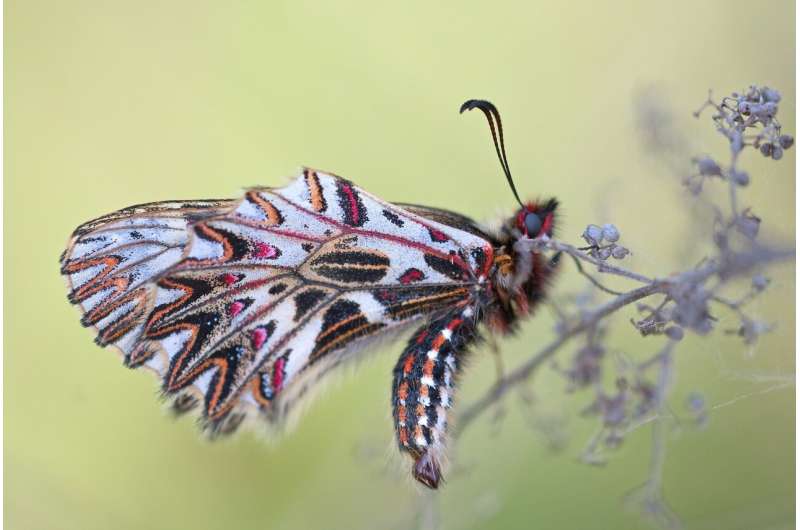This article has been reviewed according to Science X's editorial process and policies. Editors have highlighted the following attributes while ensuring the content's credibility:
fact-checked
peer-reviewed publication
trusted source
proofread
Study demonstrates how a simple metric could steer global economy towards halting and reversing biodiversity loss

Businesses are keenly aware that consumers value ethical business practices, including the protection of biodiversity, and many have committed to biodiversity conservation. A road block, however, turns out to be the large variety of ways that have been suggested to measure biodiversity and so the positive and negative impacts of business practices.
The result is a Babylonian confusion of biodiversity commitments and claims by businesses, with little transparency for consumers, clients, or investors.
Complicating matters, species extinction is often a death by a thousand cuts, which makes it difficult to hold individual actors accountable. All this makes business engagement in biodiversity protection much harder than in climate protection, where at least the metric of impacts and credits is clear: the tons of carbon emitted to or sequestered from the atmosphere.
To overcome these barriers, a study led by Axel Rossberg of Queen Mary University of London, published in the Journal of Industrial Ecology, invoked advanced mathematical methods not usually seen in ecology.
The result is a simple formula that quantifies the impacts businesses have on species extinction risk in the form of so-called Biodiversity Impact Credits. The credits are negative when businesses overall increase species extinction risk through their activities and positive if they contribute instead to what has been called "bending the curve" of biodiversity decline.
Rossberg explains, "With our new systematic mathematical approach, we avoid having to rely on some kind of ecological intuition, which has often been a source of confusion in ecology."
The study further shows that, if more businesses start to use Biodiversity Impact Credits to find efficient ways to contribute positively to biodiversity conservation, the available resources are used more and more efficiently to save as many species as possible.
This may be through the protection or restoration of large areas of natural forest or by rebuilding the populations of species that are close to extinction. Rossberg explains, "The credits automatically guide you towards the most efficient approach."
But Rossberg wants to go beyond the use of Biodiversity Impact Credits by businesses alone. He says, "We hope that soon everybody will be able to buy Biodiversity Impact Credits from reputable conservation NGOs and so contribute to the conservation of species."
In their study, Rossberg and colleagues argue that while there are other aspects of biodiversity conservation that require attention, halting species loss is an area that is especially suitable for a credit system because many of us value species no matter where they are on the planet but find it difficult to contribute to reversing their decline.
More information: Axel G. Rossberg et al, A metric for tradable biodiversity credits quantifying impacts on global extinction risk, Journal of Industrial Ecology (2024). DOI: 10.1111/jiec.13518
Journal information: Journal of Industrial Ecology
Provided by Queen Mary, University of London


















